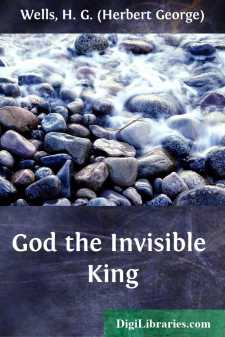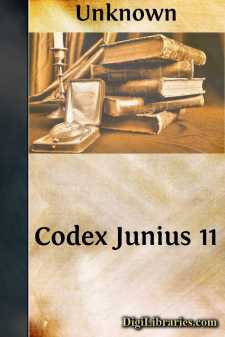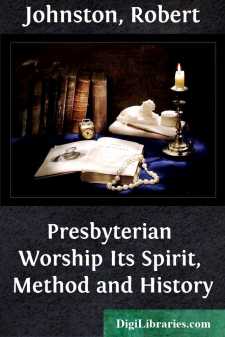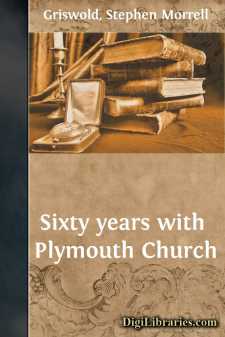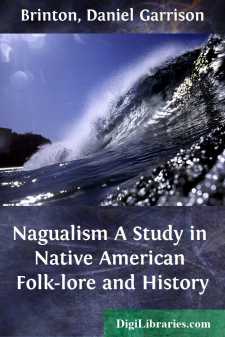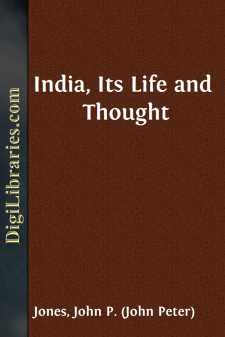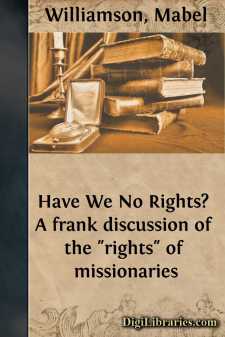Religion
- Agnosticism 2
- Antiquities & Archaeology 21
- Atheism 12
- Biblical Criticism & Interpretation 15
- Biblical Meditations 3
- Biblical Reference 1
- Biblical Studies 11
- Buddhism 8
- Christian Church 52
- Christian Education 5
- Christian Life 26
- Christianity 60
- Cults 2
- Devotional 6
- Eastern 2
- Education 4
- Eschatology 1
- Ethics 3
- General
- Gnosticism 1
- Hinduism 15
- History 28
- Holidays 10
- Inspirational 1
- Islam 8
- Judaism 3
- Leadership 1
- Meditations 3
- Monasticism 1
- Mysticism 11
- Philosophy 4
- Prayer 26
- Prayerbooks 5
- Religion & Science 12
- Sermons 54
- Spirituality 53
- Theism 2
- Theology 17
- Theosophy 15
General Books
Sort by:
CHAPTER THE FIRST THE COSMOGONY OF MODERN RELIGION1. MODERN RELIGION HAS NO FOUNDERPerhaps all religions, unless the flaming onset of Mohammedanism be an exception, have dawned imperceptibly upon the world. A little while ago and the thing was not; and then suddenly it has been found in existence, and already in a state of diffusion. People have begun to hear of the new belief first here and then...
more...
by:
Unknown
LIBER I (ll. 1-28) Right is it that we praise the King of heaven, the Lord of hosts, and love Him with all our hearts. For He is great in power, the Source of all created things, the Lord Almighty. Never hath He known beginning, neither cometh an end of His eternal glory. Ever in majesty He reigneth over celestial thrones; in righteousness and strength He keepeth the courts of heaven which were...
more...
THE FIRST BOOK OF NEPHI HIS REIGN AND MINISTRY (1 Nephi) An account of Lehi and his wife Sariah and his four sons, being called, (beginning at the eldest) Laman, Lemuel, Sam, and Nephi. The Lord warns Lehi to depart out of the land of Jerusalem, because he prophesieth unto the people concerning their iniquity and they seek to destroy his life. He taketh three days' journey into the wilderness with...
more...
by:
John Wortabet
INTRODUCTION The wise sayings and proverbs of ancient and modern times, and in all the languages I know or to which I had access in translations, have always had a great attraction for me. Drawn from the experiences and study of human life, they have been reduced by wise men to short, pithy sentences, generally expressed in some quaint or striking form, for conveying sound moral truths. They are...
more...
by:
Robert Johnston
PREFATORY NOTE. The purpose in the following pages is a simple one. It is to discover the trend of thought in connection with Public Worship within the Presbyterian Church, particularly in Scotland, during the course of her history since the Reformation. The spirit of the Church in her stirring and formative periods, especially if that spirit is a constant one, is pregnant with instruction. Such a...
more...
PREFACE For some years past I have been repeatedly urged to record my recollections of Plymouth Church and Henry Ward Beecher. One after another the original members of the church have passed away until now I am almost alone, so far as the early church connection is concerned, and I have been told that there is really no one left who could give the personal value to such a record. At first, as I...
more...
CHAPTER I. CHRIST'S WORDS. All who really love Christ love His words. They may not always fully understand their meaning, but they never reject any of them. The very fact that any word has been on the lips of Christ and received His sanction, gives it a sound of music to all who are truly disciples of the Nazarene. MOTHER'S WORDS. The words that your mother used frequently—are there any...
more...
1. The words, a nagual, nagualism, a nagualist, have been current in English prose for more than seventy years; they are found during that time in a variety of books published in England and the United States, yet are not to be discovered in any dictionary of the English language; nor has Nagualism a place in any of the numerous encyclopædias or “Conversation Lexicons,” in English, French, German...
more...
INDIA'S UNREST India has been called the land of quiet repose, content to remain anchored to the hoary past, and proud of her immobility. Invasion after invasion has swept over her; but—"The East bowed low before the blast,In patient, deep disdain;She let the legions thunder past,And plunged in thought again." Yet this same India is now throbbing with discontent, and is breathing, in all...
more...
by:
Mabel Williamson
Rights "Well," said mother, setting down a cup she had just wiped, and picking up another, "the older I get, and the older my children get, the more I realize how little right a person has even to her own children. By the time they get—well—into high school they aren't yours any more." "But, Mother," I protested, dropping a dripping dishcloth into the dishpan and...
more...


